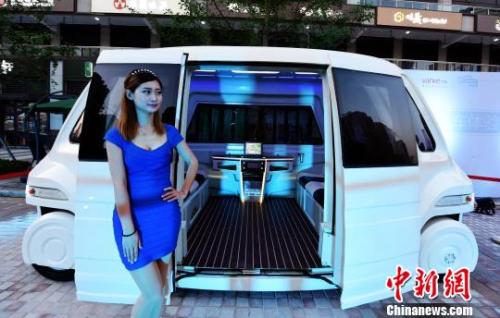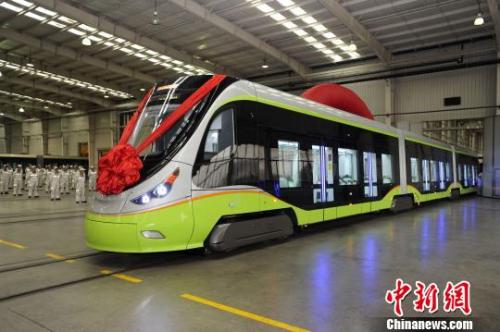Multi-site test of water to explore "autopilot" How far is smart traffic?
A few days ago, the news that Beijing's first automated driving test road landed on the ground helped the public to focus on the development of autonomous driving.
The China News reporter noted that in recent years, in addition to Beijing, several cities including Shenzhen and Shanghai have successively issued relevant documents in the area of ​​“auto testing†of vehicle autopilot and local and national levels to study and plan the future of smart cars. The development of the field.

Data Map: Achieving "unmanned" cars. Photo by Wang Xiaogang
More than "test water" automatic driving Beijing will build automatic driving test road
On January 3, the relevant person in charge of the Beijing Municipal Traffic Commission introduced that Beijing’s first automatic driving test road will be on the ground.
It is reported that apart from some pilot roads, in the future, Beijing will renovate the road facilities, promote unmanned driving technology, and allow “road coordinationâ€. In addition, Beijing will also modify road signs, signs, markings, etc. to make the driverless vehicles recognizable.
In fact, the city that tests water in the field of vehicle autopilot is not only Beijing. Shanghai, Shenzhen, Chongqing and other places have also taken actions in recent years.
For example, China’s first closed test area of ​​the “National Intelligent Internet Alliance Automotive (Shanghai) Pilot Demonstration Zone†was officially opened in Jiading, Shanghai as early as June 2016. The demonstration area provides test verification for numerous scenarios for unmanned, automated driving, and V2X connected cars. Shanghai has thus become China's first intelligent networked and pilotless pilot city.
From December 2, 2017, the bus of the Shenzhen Bus Group equipped with the “Smart Driving Bus System†began its trial operation. The test route covers a one-way journey of 1.2 kilometers and a speed of 10 to 30 kilometers per hour. There are 3 stations on the way: Hailiang, Shenba and Futian.
In addition, in December 2017, the Chongqing Municipal Economic and Information Technology Commission also revealed that Chongqing will build the first full-phase smart networked automobile test demonstration area in three phases. According to reports, the third phase of the demonstration zone is planned to be built in 2019 in the areas of Liangjiang New District and Yubei District, and an open road testing and testing area integrating 5G communications covering road scenes such as cities, mountains, highways, tunnels and bridges.

Data Map: Driverless smart car "Bai Bai." Photo by Zhou Hengyi
Local regulations: Beijing issued the first autopilot test details
As autopilot technology enters the field of vision, whether it violates the law or not violates law has also led to discussions.
The current "Road Traffic Safety Law" has not incorporated the problems of drone driving and robot driving. According to the current regulations, motor vehicles must be driven by qualified drivers as required. In addition, the field of automated driving is still blank in the equipment, command, and guidance of road traffic.
A legal person had previously analyzed that unlicensed driving can be regarded as a dangerous driving behavior because of the blindness of the regulations. Once the automatic driving loses control and leads to serious consequences, the occupants in the vehicle must assume corresponding legal responsibilities.
However, at the local level, there are already some guiding norms introduced.
In December last year, the Beijing Municipal Transport Commission issued two documents, "Beijing Municipality's Guiding Opinions on Accelerating the Work of Road Testing for Autopilot Vehicles (Trial)" and "Implementation Rules for the Administration of Road Testing in Autonomous Vehicles in Beijing (Trial)". This is also the nation's first guidance specification for autonomous driving road testing.
The "Guidance Opinions" and the "Implementing Rules" stated above stipulate that independent legal entities registered in China may apply for a temporary on-street drive for scientific research and stereotyped tests related to autonomous driving. To apply for a road test, you must have both automatic and manual driving modes that can be switched between the two modes at any time.
During the drive test phase, the driver must be configured for emergency, regardless of whether the vehicle is fully autonomous. Specifically, each vehicle must be equipped with a test driver who is familiar with the autopilot system with certain driving experience. Under normal circumstances, the test driver monitors the operation of the vehicle. In special or emergency situations, the test driver takes over the test vehicle. Driving operation ensures safe driving of the vehicle. In addition, the test vehicle must also be equipped with a monitoring device that can monitor the driving behavior of the driver at any time.
Some commentaries said that through this guidance, Beijing has clearly expressed its attitude of supporting new technologies and understanding new technologies, and has effectively provided a platform and policy support for the experiment of autonomous driving technology.

Data Map: In July 2017, the world’s first modern trams to achieve automatic driving were successfully rolled out. Photo by Hu Yaojie
Multi-Sector Signaling Study Exploring Autopilot-related Fields
The China News reporter noted that, in addition to the local level, in the past six months, a series of documents published at the national level have also released signals of exploration and planning of autonomous driving.
In July last year, the State Council issued the "New Generation Artificial Intelligence Development Plan" to clarify the development of self-driving cars and rail transit systems, and to strengthen the integration and support of on-board sensing, automatic driving, vehicle networking, and the Internet of Things, and to develop a traffic intelligence sensor system. Formed China's autonomous autopilot platform technology system and product assembly capabilities, and explore the auto-driving car sharing model.
In September, the National Development and Reform Commission revealed that it has initiated the drafting of the national intelligent vehicle innovation and development strategy. In November, the "Opinions on Comprehensively Deepening the Development of Green Transportation" promulgated by the Ministry of Transport also proposed to obtain a number of breakthrough scientific research achievements in areas such as "autopilot".
In terms of platform construction, the Ministry of Industry and Information Technology released the “Three-year Action Plan for the Development of a New Generation of Artificial Intelligence Industry (2018-2020)†released in December 2017, setting up a reliable, secure, real-time intelligent network connection by 2020. The intelligent vehicle platform forms a platform-related standard that supports highly automated driving and other goals.
Not long ago, at the National Transportation Working Conference in 2018, automatic driving also became a high frequency word. The meeting proposed to grasp new needs such as autopilot, promote the digitalization of transportation infrastructure, network integration, and intelligent development, and speed up the construction of a digital transportation infrastructure with the coordination of equipment and facilities.
In addition, the meeting also stressed that advance research into the replacement effect of new technologies such as autopilot, fostering an army of knowledgeable, skilled, and innovative workers and nurturing builders of qualified transportation power.
It can be expected that in the future, self-driving cars will truly enter into your life or life.
Epoxy resin is a high molecular polymer with the molecular formula (C11H12O3)n, which refers to a general term for a class of polymers containing more than two epoxy groups in the molecule. It is a polycondensation product of epichlorohydrin and bisphenol A or polyol. Due to the chemical activity of epoxy group, a variety of compounds containing active hydrogen can be used to open the ring, cure and crosslink to form a network structure, so it is a thermosetting resin. Bisphenol A epoxy resin is not only the largest in output and the most complete variety, but also new modified varieties are still increasing, and the quality is constantly improving.
Epoxy Capper,Silicone Cas 126-80-7,Syntheses Material Intermediates,Functional Modified Silicone Fluid
Suzhou Cheerchem Advanced Material Co., Ltd. , https://www.szcheerchem.com